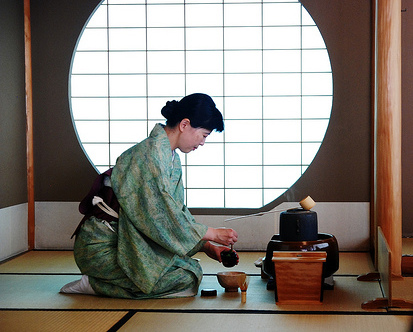
The Book of Tea, by Okakura Kakuzō (岡倉覚三) is interesting because it was written for the West, and in English.
It’s a classic tea book, from 1906.
After reading the book, I realized that it really doesn’t talk much about tea itself. It’s more about art and culture in Japan, and how it relates to tea through the concept of teaism.
What is teaism?
Quoting from Wikipedia: “When tea is more than a drink and the tea ceremony is understood and practiced to foster harmony in humanity, promote harmony with nature, discipline the mind, quiet the heart, and attain the purity of enlightenment, the art of tea becomes teaism.”
When I looked at the Japanese version of The Book of Tea, 茶の本, it translates teaism as sadō (茶道) which is none other than The Way of Tea, or the Tea Ceremony.
Introductory chapters
The first chapter, The cup of humanity, is an introduction to the whole book. It also talks a bit about the differences between the East and the West. Remember that at the time Okakura wrote this book, the oriental culture was for the most part unknown in the US and Europe.
Okakura states that tea bridged that gap, because many people around the world drink tea: “Strangely enough, humanity has so far met in the tea cup”.
The second chapter is full of tea history, it was interesting to read. It ends with the tea ceremony and explains why powdered tea remained in Japan (in the form of matcha) while it disappeared in China.
Eastern philosophy
Next there’s a chapter about Taoism and Zennism.
This chapter is heavily philosophic, I understand the need to have this background before plunging into the Way of Tea, but I found it too long for my taste. Still, if you’re a fan of philosophy you’ll love it.
About the topic of Zen, I found the following concept interesting: “A special contribution of Zen to Eastern thought was its recognition of the mundane as of equal importance with the spiritual”.
Chapter four is named The tea room. This chapter explains the Zen influence in the tea room’s architecture.
I found this chapter to be highly detailed and almost poetic. It was a pleasure to read.
About Art
Okakura then covers art appreciation, also relating it with the concept of the tea master.
At the end of this chapter he critiques popularity, because the name of the artist had become more important than the quality of the work itself.
The sixth chapter is named Flowers.
I’m not sure why, but he dedicated a complete chapter to flowers!
Fortunately, at the end he ties it with the tea ceremony through Ikebana (Art of flower arrangement).
Tea masters
The last chapter is short but substantial. It explains how the tea masters of Japan have influenced many areas, such as gardening, pottery, lacquerware and textiles.
At the end there’s a story about the grand master of the tea ceremony, Sen no Rikyū.
Hideyoshi, the imperial regent at the time, had ordered Rikyū to commit ritual suicide. How Rikyū performed his last tea ceremony and then ended his own life was fascinating.
Misleading title
This book should be titled something like “The Tea Ceremony and it’s influence on Japanese culture”.
You won’t find much written about tea itself. There’s nothing about how it’s made, nor how to prepare it. The closest it gets to discussing tea is in the part about it’s history.
The book does have some interesting stories scattered here and there, and profound thoughts. If you’re into sadō I think it’ll help a lot.
Finally, I saved the best part for last. You can download this book for free!
I did so through Amazon, click here for the link.





January 1, 2013
One of the best and most pleasing and stimulating tea books I’ve read so far. Even though it does not directly talk about tea.